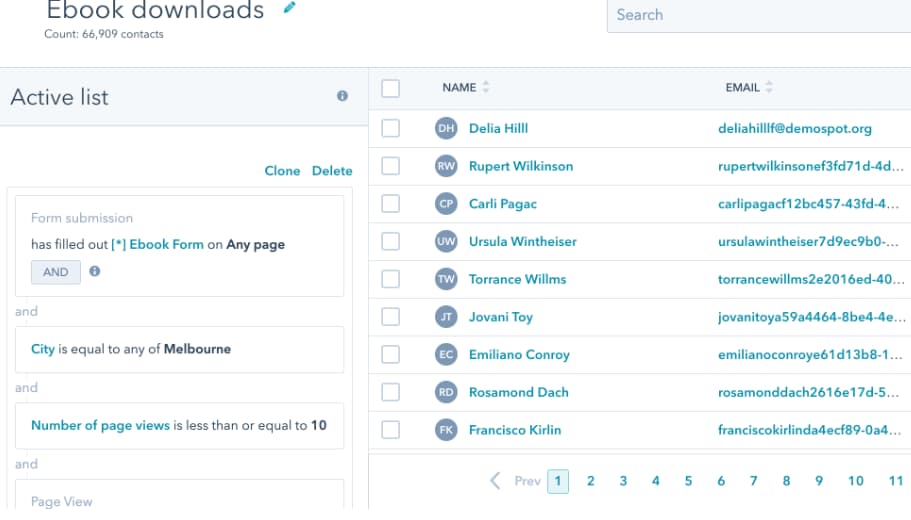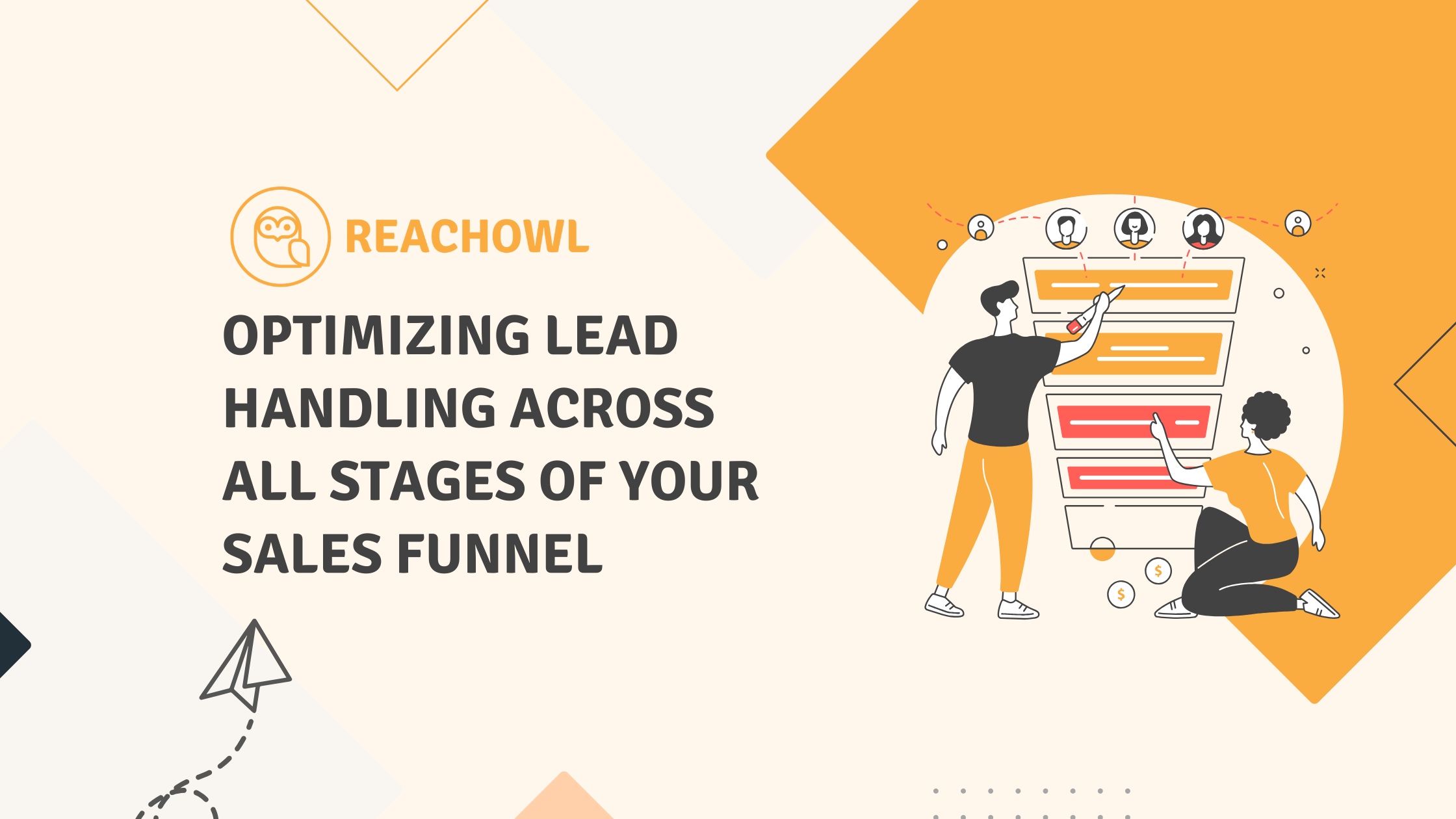In sales, it’s important to handle potential customers at each step of the sales funnel. You need to use a careful approach from the first contact to the actual purchase, guiding customers easily along the way.
In this blog, we’ll guide you on ways to handle potential customers at every step of your sales funnel. We’ll share tips to make sure the conversion from lead to sale goes well.
Table of Contents
ToggleUnderstanding the Sales Funnel
Before we talk about handling leads, let’s quickly go over the sales funnel idea. The sales funnel shows how customers go from knowing about a product to buying it.
It typically consists of the following stages:
1. Awareness:
The potential customer learns about your product or service.
2. Interest:
The potential customer shows interest in what you’re offering.
3. Consideration:
The potential customer thinks about your product as a solution to their needs.
4. Intent:
The potential customer shows a desire to buy.
5. Purchase:
The potential customer turns into a paying customer.
Stage 1: Awareness
Lead Capture Strategies:
1. Content Marketing:
Make useful content like blog posts, videos, or infographics to get the attention of potential leads that address your audience’s pain points. For creating high-quality video content, you can take the help of tools like an online video editor which can greatly enhance the visual appeal and effectiveness of your videos. Such tools can transform basic content into engaging and professional-looking videos.
2. Social Media Engagement:
Utilize social media to enhance the visibility of your brand. Engage with your audience and share content that they find interesting, such as flyers and posters. It’s also preferable to use a flyer maker to craft flyers for conveying messages on social media. Flyers prove to be a more effective way to spread awareness of your brand on social platforms.
3. SEO Optimization:
Make sure your website is easy for search engines to find. Use the right keywords and create content that matches what your target audience is searching for.
Lead Management Tips:
1. Capture Contact Information:
Offer things like ebooks or webinars to get people’s contact information. Place pop-ups or forms strategically on your website to capture this information.
2. Segment Leads:
Begin segmentation early using the data you collect. Knowing what your leads are interested in at this point helps you customize future interactions with them.
3. Initial Outreach:
Send welcome emails or messages to introduce your brand and provide valuable resources. Don’t try to sell too soon, focus on building a connection.

Stage 2: Interest
Lead Capture Strategies:
1. Webinars and Events:
Host webinars or participate in events relevant to your industry. This lets you engage directly and gather leads during the process.
2. Email Marketing:
Create engaging email campaigns with content that suits your audience. Share case studies, product features, or special offers to keep their interest growing.
3. Interactive Content:
Add quizzes, surveys, or interactive tools to your website. These not only keep leads engaged but also give you useful data for making things more personalized.
Lead Management Tips:
1. Lead Instrument:
Use lead instrument by giving points for actions like opening emails, clicking links, or joining webinars, based on their engagement level.
2. Personalized Communication:
Adjust your communication to match the interests shown by leads. Personalizing messages increases engagement and builds a stronger connection.
3. Educational Content:
Provide content that addresses specific problems or challenges. Highlight how your product or service can solve these issues.
Stage 3: Consideration
Lead Capture Strategies:
1. Product Demos:
Give product demonstrations to leads who are very interested. This gives them hands-on experience and can be a strong way to convince them to make a purchase.
2. Free Trials or Samples:
If possible, offer free trials or samples. This makes it easier for leads to try out and experience the value you provide without a big commitment.
3. Case Studies:
Share success stories and case studies. By showcasing real-world examples, you build trust and show the practical benefits of your offering.
Lead Management Tips:
1. Personal Consultations:
For B2B or expensive items, provide personalized consultations. This helps you understand the lead’s specific needs and customize your frequency accordingly.
2. Address Objections:
Take the initiative to handle common objections. Use FAQ content, personalized emails, or direct interactions to address concerns before they become an issue.
3. Comparison Content:
Develop content that compares your product with competitors. Be open about strengths and differences to help leads make well-informed decisions.

Stage 4: Intent
Lead Capture Strategies:
1. Special Offers:
Give special offers or discounts to leads who show strong interest. This can be a compelling incentive for them to take immediate action.
2. Limited-Time Promotions:
Generate importance with limited-time promotions. Using countdowns or offering exclusive deals for a short period can encourage leads to make a decision quickly.
3. Re-engagement Campaigns:
For leads that seem inserted, use re-engagement campaigns. Remind them of the value you provide and address any concerns they may have.
Lead Management Tips:
1. Responsive Communication:
Stay highly responsive at this stage. Quickly respond to questions, offer additional information, and help facilitate the decision-making process.
2. Customized Offers:
Adjust your offers based on the specific needs or preferences the lead has mentioned. Customizing reinforces that your product is uniquely suited to their requirements.
3. Decision-Process Content:
Share content that helps leads in the decision-making process. This might include detailed product guides, comparison charts, or references from other clients.
Stage 5: Purchase
Lead Capture Strategies:
1. Checkout Process:
Make sure the checkout process is easy and user-friendly. Reduce any obstacles, provide various payment options, and clearly explain the steps involved in the process.
2. Post-Purchase Surveys:
Use post-purchase surveys to collect feedback. Understanding the customer’s experience can help you make improvements and build an establishment for future engagements. By using Surveysensum for post-purchase surveys, you can gain valuable insights into your customers’ satisfaction and identify areas for improvement.
3. Upselling or Strategically launch:
Strategically offer additional products or upgrades while someone is making a purchase. Highlight complementary products or premium features.
Lead Management Tips:
1. Show your Gratitude:
Immediately say thank you after someone purchases. Send appreciation emails, give order confirmations, and explain what happens next.
2. Onboarding Sequences:
Create onboarding sequences to guide new customers through the initial steps of using your product or service, if that makes sense. Ensure they see the worth from the beginning.
3. Post-Purchase Engagement:
Stay in contact with clients after they make a purchase. Share valuable content, give updates, and request that they share their experiences through reviews or references.
When it comes to managing leads in your sales process, careful planning, individual communication, and responsiveness are necessary. Understand the needs of your leads to guide them easily from attention to becoming loyal customers.
Regularly check how well your strategies are working, get feedback, and adjust to changes in the market. By doing so, you’ll increase conversions and create lasting relationships for the long-term success of your business.

